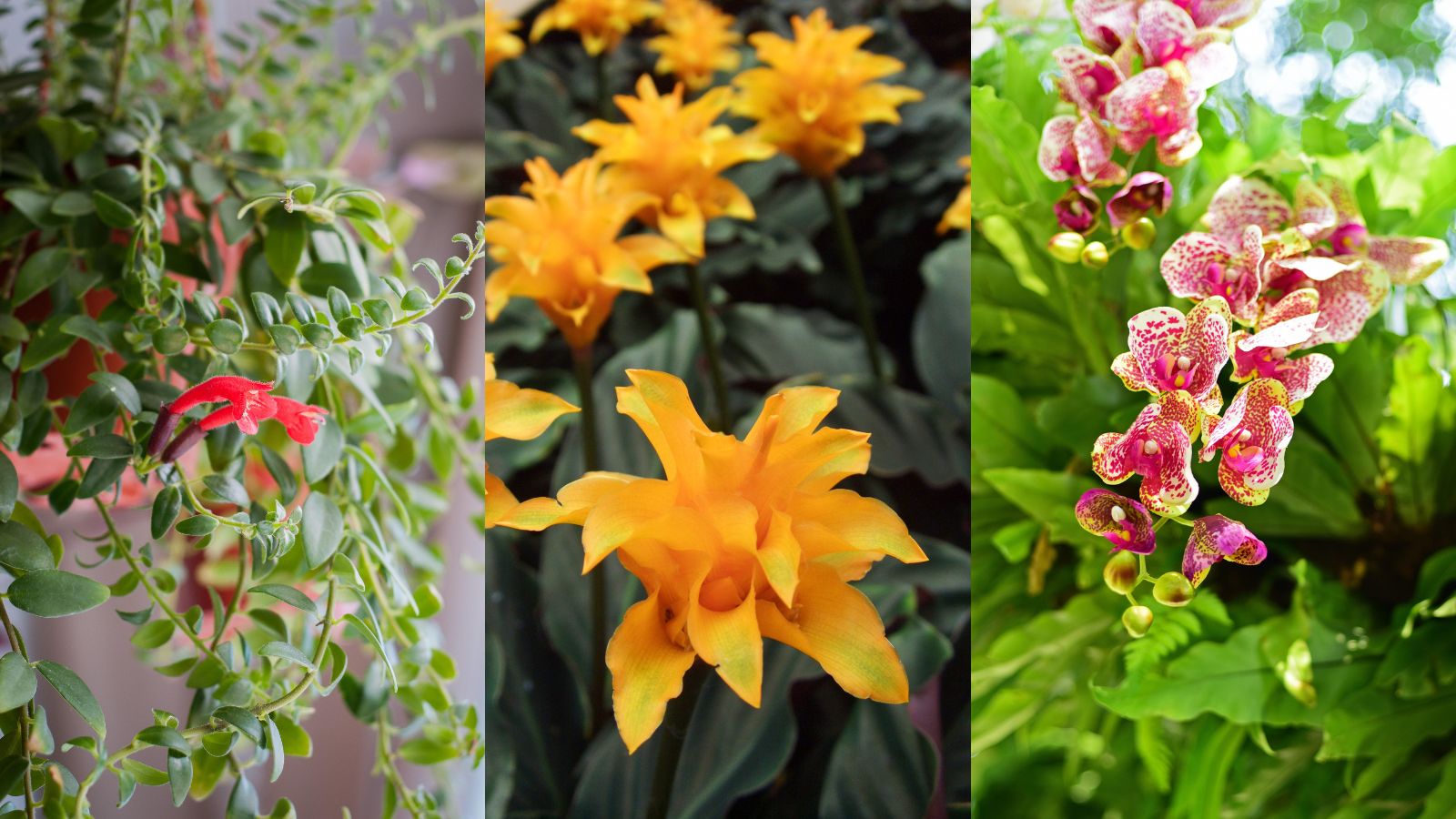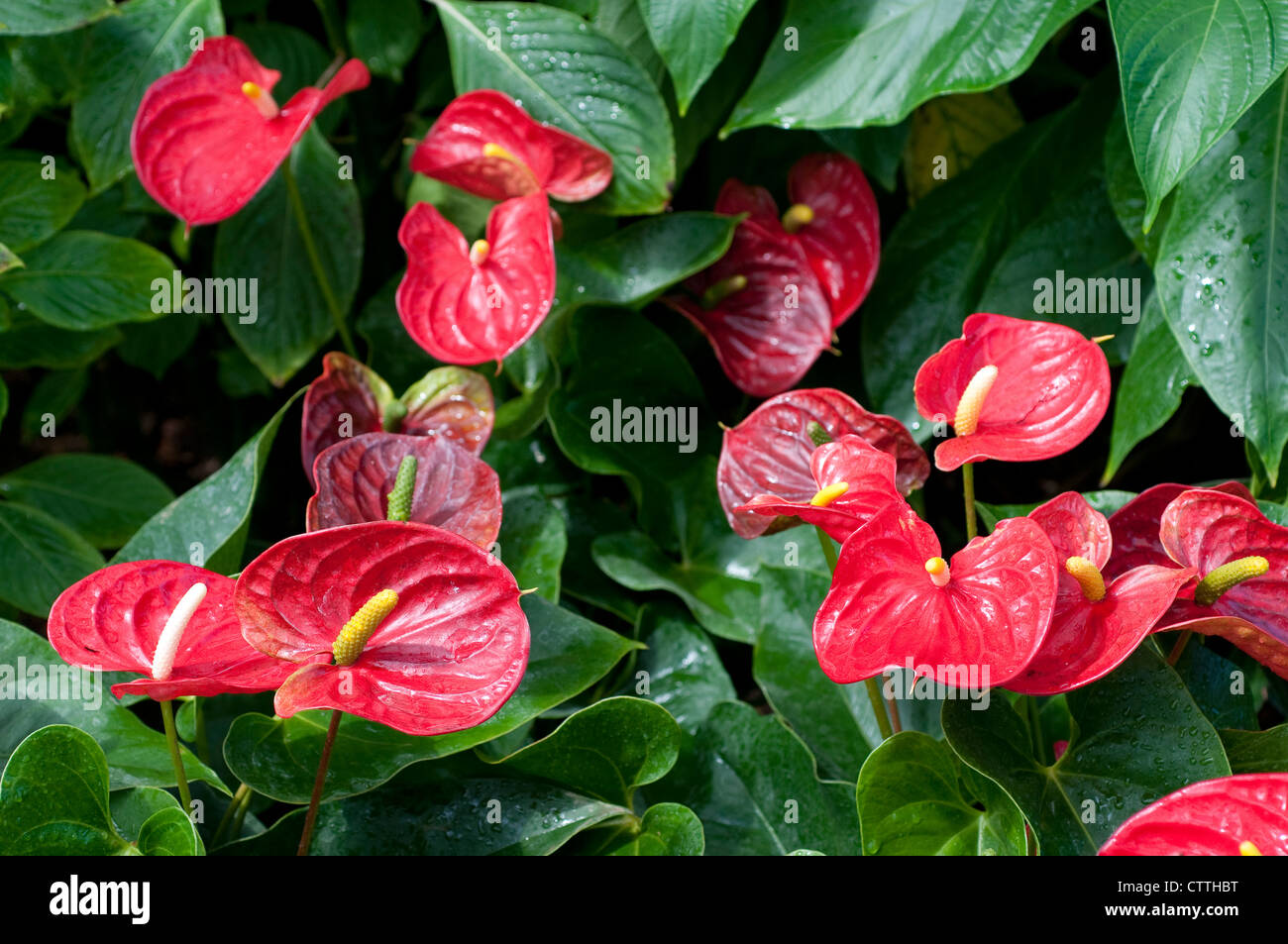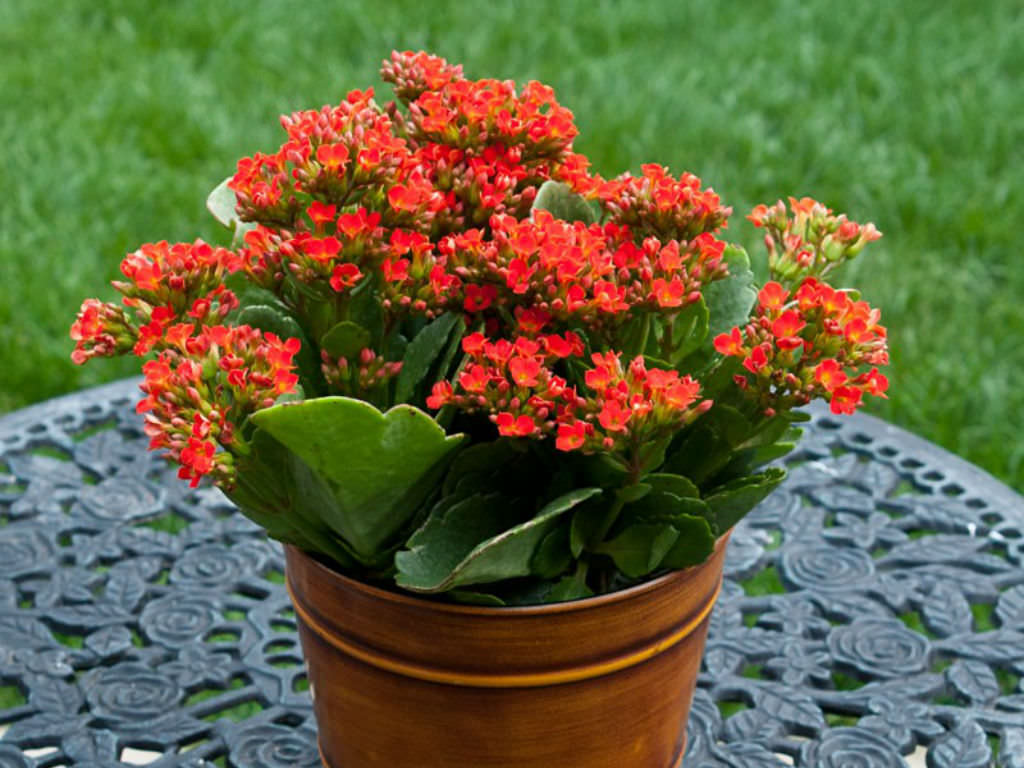Bringing the Vibrant Red Indoors: Why Choose Flowering Houseplants?
Transforming your living space with the vivid hues of nature is now easier than ever, thanks to the charm of indoor plants with red flowers. These botanical beauties offer a unique way to infuse color and vitality into any room. Red, in particular, is a color that commands attention. It evokes feelings of warmth, energy, and passion. These flowers can uplift the mood of any interior setting. Moreover, they contribute to a more dynamic and inviting atmosphere. The right indoor plants with red flowers can easily become a focal point in your home. They are perfect for adding a pop of color to neutral spaces. The best part is that many of these flowering houseplants are not as difficult to care for as some might think. A variety of options exist, some of which are surprisingly low-maintenance. This means even novice gardeners can enjoy their radiant blooms. The process of selecting and caring for indoor plants with red flowers becomes a rewarding experience.
The allure of indoor plants with red flowers extends beyond mere aesthetics. These plants offer a myriad of benefits. They can purify the air, creating a healthier environment. They also bring a sense of calm and connection with nature. The vibrant red blooms act as natural mood boosters. They contribute to an overall feeling of well-being. The color red is known to energize and stimulate the senses. This makes indoor plants with red flowers an excellent addition to any space that needs a touch of excitement and vibrancy. Furthermore, the diversity within this category of plants is remarkable. From the bold, exotic blooms of anthuriums to the delicate clusters of kalanchoes, there’s an indoor plant with red flowers to match any taste. Incorporating these plants into your décor provides a seamless blend of style and functionality. Their presence will enhance your indoor environment. This ensures that your living space is not only visually captivating but also revitalizing.
The Charms of Red: Exploring Popular Indoor Flowering Plant Varieties
The allure of indoor plants with red flowers is undeniable, offering a striking visual appeal that can transform any living space. Several popular choices exist for those looking to introduce these vibrant hues into their homes. Anthuriums, often called “Flamingo Flowers,” are a fantastic option. They boast uniquely shaped, glossy red blooms and rich green foliage, adding a touch of the tropics. The Christmas Cactus, a seasonal favorite, provides bursts of red flowers around the late fall and winter months. Timing is crucial to ensure these plants bloom, making them a festive addition. Another versatile option is the Kalanchoe, which comes in various shades of red. These plants feature clusters of small, bright flowers. Each of these indoor plants with red flowers brings a different aesthetic and care requirement.
When choosing indoor plants with red flowers, consider the specific characteristics of each variety. Anthuriums, with their large, showy blooms, make a bold statement and require more humidity than other options. The Christmas Cactus, while not blooming year-round, provides a beautiful splash of color when its bright red flowers appear, especially during the winter holidays. Proper timing of light and temperature changes is essential for their blooming period. Kalanchoes are often favored for their low maintenance nature and the continuous display of small, red flowers. They are a great choice for beginners due to their tolerance of less than perfect care. Comparing these plants highlights their differences in care needs. This will guide you in selecting plants that best suit your environment and lifestyle. The next section will go into how to nurture these plants, ensuring long-lasting beauty.
How to Nurture Your Red Flowering Plants for Lasting Beauty
Caring for indoor plants with red flowers involves understanding their basic needs. These vibrant plants thrive when given the right environment. Light is a crucial element. Most red flowering indoor plants require bright, indirect light. Direct sunlight can scorch their leaves and fade the brilliant color. A spot near a window with a sheer curtain works well. Avoid placing them in dark corners of the house. Watering techniques also play a key role in the health of your plants. Overwatering is a common problem that can lead to root rot. Allow the top inch of the soil to dry out before watering again. Ensure that the pot has proper drainage holes to avoid waterlogged soil. Consider the plant’s natural habitat. Some, but not all, red flowering indoor plants will need high humidity levels to truly thrive. If your indoor space is very dry, consider using a humidifier or grouping your plants together to create a microclimate of higher humidity. The temperature also needs to be considered. Maintaining a steady temperature between 65 and 75 degrees Fahrenheit is usually ideal. Avoid sudden changes in temperature, and drafts. Using the correct potting mix is also very important. A well-draining potting mix formulated for indoor plants is best. Supplement your plant’s nutrition by adding fertilizer during the growing season. Regular fertilization helps to maintain continuous blooming, as they will use up nutrients in the soil during active growth. Consider using a balanced liquid fertilizer for flowering plants according to the package instructions. This proactive care ensures your indoor plants with red flowers will continue to add beauty to your living space.
Consistent care is the best way to keep your indoor plants with red flowers happy and healthy. By understanding and applying the general care tips of light, water, humidity, temperature, and fertilization you set the plants up for success. Most of these beautiful plants need bright indirect light. This ensures that they get enough light for photosynthesis without burning their delicate leaves. Watering should be done with care. It is important to avoid overwatering by allowing the soil to dry out partially between watering sessions. The exact frequency will depend on your home’s environment. Use your finger to check the soil’s moisture. Humidity is often overlooked, but for many red flowering plants, higher humidity will be beneficial. You can increase the humidity by using a humidifier, pebble tray, or grouping plants together. Temperature levels that are too high or too low can cause stress and problems with your plants. Maintaining a consistent and stable environment is key for their well-being and long term health. Fertilization provides the essential nutrients needed for those brilliant blooms. Consistent feeding will promote continuous flowering throughout the season. Be sure to follow the recommended dosage from the product instructions. The correct potting mix will also make a difference. A well-draining mix keeps the roots healthy. By understanding and addressing these essential aspects you will be well on your way to maintaining a collection of healthy, vibrant, indoor plants with red flowers. Providing this care will encourage the best growth and long-lasting beauty.
Unveiling the Flamingo Flower: A Closer Look at Anthurium
The Anthurium, often called the “Flamingo Flower”, is a captivating choice among indoor plants with red flowers. Its unique, spade-shaped blooms and glossy, heart-shaped foliage make it a striking addition to any indoor space. The vibrant red color of the spathe, the modified leaf that surrounds the actual flowers, is particularly appealing. Several varieties offer stunning red hues. ‘Red Queen’ is known for its intense, deep red color. ‘Sierra Red’ provides a bright, classic red. ‘Lady Jane’ presents a more delicate, elegant shade. These indoor plants with red flowers bring a touch of the exotic indoors. Anthuriums are a great way to add a bold color statement to your home.
Caring for an Anthurium requires attention to its specific needs. It thrives in bright, indirect light, just like most other indoor plants with red flowers. Direct sunlight can scorch its leaves. These plants prefer a well-draining potting mix. A mix containing orchid bark, perlite, and peat moss works well. Watering should be done when the top inch of soil feels dry. Avoid overwatering, as it can lead to root rot. Anthuriums need high humidity to flourish, which echoes the importance of moisture for most red flowering indoor plants. Consider placing a humidifier nearby or using a pebble tray with water. Maintaining a consistent temperature between 65-80°F is ideal for optimal growth and blooming. Fertilize regularly during the growing season with a balanced liquid fertilizer.
The general care tips mentioned in the previous section are all applicable to Anthuriums. However, the need for high humidity is more pronounced with these plants. Therefore, they require a little extra attention than some other indoor plants with red flowers. Understanding the subtle nuances of anthurium care ensures these beautiful red flowers will continue to brighten any room. Providing these ideal conditions results in vibrant and long-lasting blooms. By mastering these detailed care instructions, you can fully enjoy the beauty of these striking indoor plants with red flowers. Remember to always monitor your plant, making adjustments as needed to its specific needs.
The Festive Touch: Mastering the Christmas Cactus for Red Blooms
The Christmas Cactus, a popular choice among indoor plants with red flowers, offers a unique holiday-themed appeal. Its cascading stems and vibrant blooms make it a festive addition to any home, particularly during the late fall and early winter months. Unlike some other indoor plants with red flowers, the Christmas Cactus requires specific conditions to trigger its stunning floral display. The plant’s blooming cycle is heavily influenced by temperature and light exposure. To encourage buds, ensure a drop in temperature to around 60-65°F (15-18°C) for several weeks, usually starting in late September or early October. Simultaneously, provide about 12-14 hours of uninterrupted darkness each day. This period of cool temperatures and extended darkness is crucial for the plant to initiate its flowering process. Once buds appear, maintaining these conditions will ensure a rich display of red flowers, often opening around the Christmas season, hence the name. Remember, this careful manipulation of environmental factors is key to enjoying the full potential of this beautiful plant, setting it apart from other flowering indoor plants with red flowers.
Proper care extends beyond just temperature and light. The Christmas Cactus prefers well-draining soil. Avoid overwatering, allowing the top inch or two of soil to dry out between waterings. In terms of light, during the blooming period, the plant thrives in bright, indirect sunlight. This will help maintain the rich color of its red blooms. Move it away from very direct sunlight, especially during the hotter parts of the day, to prevent scorching. Some red varieties of Christmas Cactus are available, often boasting different shades of red, ranging from vibrant scarlet to deep crimson. Regular fertilizing during the growing season, spring through early fall, using a balanced liquid fertilizer is recommended. Avoid fertilizing when the plant is in its blooming or resting phase. The Christmas Cactus brings a unique type of red bloom to the world of indoor plants with red flowers, it’s a rewarding plant for those who understand its specific needs and the care required to encourage its festive blooms year after year.
Kalanchoe Blossfeldiana: A Low-Maintenance Option for Bright Red Colour
For those seeking vibrant indoor plants with red flowers that don’t demand constant attention, the Kalanchoe blossfeldiana is an excellent choice. This succulent boasts clusters of small, bright red flowers, creating a cheerful display. Several varieties offer rich shades of red, allowing for diverse color palettes. The appeal of Kalanchoe lies in its forgiving nature and ability to thrive with minimal effort. These resilient plants are well-suited for beginners, offering a rewarding experience without the need for expert care. Kalanchoe plants bring long lasting color and beauty indoors and are a fantastic option for busy individuals who still wish to enjoy the charm of indoor plants with red flowers.
The care requirements for Kalanchoe plants align with the general principles of caring for many indoor plants with red flowers, but with even more leniency. Bright, indirect light is optimal; however, they can tolerate lower light conditions, although this may reduce the abundance of blooms. Overwatering is the most common pitfall; therefore, allow the soil to dry out completely between waterings. This is in line with the general care of red flowering houseplants but kalanchoe forgives neglect more readily. They don’t have high humidity needs, making them suitable for most homes. These aspects make them easier to maintain than other indoor plants with red flowers. Kalanchoe demonstrates that beauty can be easily achievable and enjoyed by all.
This flowering succulent serves as a testament to how indoor plants with red flowers don’t necessarily require extensive care. The Kalanchoe plant stands as a prime example. Its consistent blooming cycle and low-maintenance needs offer a unique advantage for beginners. The deep red hues add a lively ambiance to any space and require less attention. By keeping their basic needs met – adequate light, proper watering techniques and the right soil, anyone can enjoy the colorful blooms of kalanchoe. These plants will brighten up your home with vibrant red color, with minimal effort. Their resilient nature and long lasting blooms make them a very practical choice for indoor plant lovers.
Troubleshooting Common Issues: Ensuring Your Red Flowers Thrive
Maintaining the vibrant beauty of indoor plants with red flowers requires vigilance. One frequent issue is bud drop. This often occurs due to environmental changes. Inconsistent watering, drafts, or low humidity can cause buds to fall off before they bloom. To prevent this, ensure your indoor plants with red flowers receive consistent care. Avoid sudden temperature fluctuations and maintain the recommended humidity levels for each specific plant. Consistent care is crucial for sustained flowering. Pests can also pose a threat. Common culprits include aphids, spider mites, and mealybugs. These pests can suck the sap from your plants. This results in weakened growth and potential bud drop. Regular inspection of your indoor plants with red flowers is important. Look under leaves and around stems. If pests are present, use insecticidal soap or neem oil. Follow product instructions carefully for effective control. This will help keep the plants healthy.
Leaf yellowing is another common problem with indoor plants with red flowers. It often indicates an issue with watering. Overwatering is a frequent cause of yellowing leaves. This can lead to root rot. Allow the soil to dry slightly between waterings. Be sure that the pot has proper drainage. Underwatering can also lead to yellowing and dryness. The key is to find a balance. Consider the plant’s specific needs. Insufficient light can also cause issues. This can result in weak growth and dull flowers. If leaves are yellowing move indoor plants with red flowers to a brighter spot. If the light is too intense move it to a less intense spot. Proper fertilization is crucial for continuous blooming. A balanced liquid fertilizer during the growing season is recommended. Avoid over-fertilizing as this can lead to salt buildup in the soil. This will also cause issues. Remember, consistency is key to preventing these issues. Adopting a proper maintenance routine provides the best chance for success. This routine will ensure your red flowering plants thrive.
Choosing the Perfect Red Flower for Your Indoor Space
Selecting the right indoor plants with red flowers involves several considerations. Assess your experience with plant care. Consider the available light in your space. Think about your aesthetic preferences. Some indoor plants with red flowers require more attention than others. The Kalanchoe, for instance, is a low-maintenance option ideal for beginners. If you have bright, indirect light, both Anthuriums and Christmas Cactus can thrive. Anthuriums, with their striking, glossy leaves, are a superb choice for those seeking an elegant focal point. These vibrant indoor plants with red flowers can add a touch of drama. Christmas Cactus is perfect for those who want blooms timed to a specific season. Each plant brings its own charm and unique care requirements to the table. Take the time to understand each plant’s needs. This will help you make an informed decision for your home.
The joy of having indoor plants with red flowers extends beyond their visual appeal. The rich color of red can create a warm and inviting atmosphere. It adds a touch of vibrancy and energy to any room. These plants can have a positive impact on your mood. Red-flowered plants can be a wonderful way to express your personal style. They also offer the satisfaction of nurturing a living thing. The right choice of indoor plants with red flowers can transform your space. A space can transform into an indoor oasis. Consider how each plant’s form and bloom style will complement your existing decor. Reflect on how much time you can dedicate to care routines. The abundance of red tones can enhance your home’s ambiance. It creates a cheerful and uplifting environment. Remember, the journey with indoor plants is as rewarding as the destination.
Ultimately, the best indoor plants with red flowers for you will align with your lifestyle and your preferences. The selection of each plant should be a personal journey. Each plant has individual quirks and special needs. Further research, based on your specific preferences, is highly recommended. This ensures a harmonious relationship between your chosen plant and its new environment. The rewarding experience of owning indoor plants with red flowers comes with understanding. Enjoy watching them flourish and bring a sense of life into your space. With a little care and dedication, these blooms will surely brighten your home for months to come. Their beauty will make any room full of live and colour, and give it a sense of life.
https://www.youtube.com/watch?v=UcoFxKeXS8c




